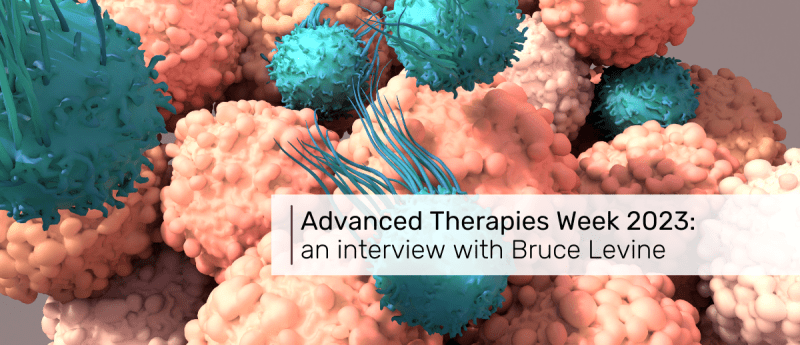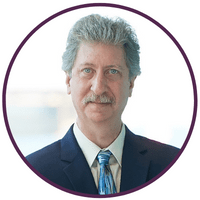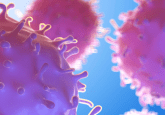Improving access to CAR-T cell therapy: an interview with Bruce Levine

 At Advanced Therapies Week 2023 (17–20 January 2023; Miami Beach Convention Center; FL, USA), we talked to Bruce Levine about how we can improve patient access to CAR-T therapies.
At Advanced Therapies Week 2023 (17–20 January 2023; Miami Beach Convention Center; FL, USA), we talked to Bruce Levine about how we can improve patient access to CAR-T therapies.
Bruce is a professor of cancer gene therapy at the University of Pennsylvania (PA, USA) and the Founding Director of their clinical cell and vaccine production facility. He is the co-founder of two spinout companies from the university, Tmunity Therapeutics (PA, USA) and Capstan Therapeutics (CA, USA), as well as the immediate past President of the International Society for Cell and Gene Therapy.
What has been the most exciting development in autologous cell therapies over the last few years?
I think the most exciting development we’ve seen recently is the emergence of CAR-T cell therapies for lymphoma as standard-of-care in second-line therapy. That’s huge. We have approvals for Breyanzi and Yescarta for second-line treatment. This tells us that we’re moving beyond the therapy of last resort, moving up in line for treatment of patients.
What we have to work on is providing better access for patients. It’s estimated that only between 15% to 20% of patients who could potentially benefit from CAR-T cell therapy are actually receiving it. If we’re innovating but patients aren’t benefiting from what we’re innovating, then we have to improve access so patients can benefit from these advanced therapies. The real beauty of a meeting like this is that we have people at every stage of the development of advanced cell therapies. We have the innovation, the translation, the manufacturing, the quality and the correlative studies, the commercialization but also patient access and reimbursement.
How can these therapies be made more accessible and more affordable to patients?
I think it’s a combination of factors. To make these therapies more affordable, we can reduce production costs. An example of how to do this is our ex vivo process for manufacturing CAR-T cells. We started 20 years ago with a 12-day process and then moved to a 9 or 10-day process. What I’m going to be sharing at the meeting is a 3-day process. We know Novartis (Basel, Switzerland) is developing a 2-day process, and there are some reports of a 1-day process. So, you’re being much more efficient with laboratory resources and labor and reducing the cost and materials as well as reducing ever so slightly the turnaround time. I think that over the next year or two, we’ll see some really exciting news coming out from those shortened processes.
Could you please tell us about your presentation?
I’m going to be talking about where we are now with CAR-T cell therapies, including approvals and what’s coming along in the next generation. One topic is how to make these CAR-T cells more potent. We know that there are patients that benefit long-term, but we also know that there are patients that relapse and patients that don’t respond. So how can we enhance the potency of CAR-T cells? I have been tracking reports over the past several years looking at how one can increase potency, for example by knocking out genes or adding in factors.
I have a list of about 32 now, which is a pretty large number, particularly if you think about the combinations of those.We need to look at what works best but also what works best long-term without adverse effects.
How do you envision improvements in these cell therapies changing the future of cell and gene therapy?
The approvals we have for CAR-T cells now are in blood cancers, so leukemia, lymphoma, myeloma. Those are indications of 6,000 to 10,000 each in the USA. For solid tumors, that number is multiplied by a factor of 10. One has to think about the cost of generating these therapies and the talent shortage we have, and that makes me wonder if in the current paradigm with ex vivo manufacturing, whether we really would be able to provide access to patients with solid tumors.
To address that, we have in development a novel technology that manufactures CAR-T cells in the body, that is in vivo. Everyone is familiar with the mRNA COVID vaccines – there’s a lipid nanoparticle that encapsulates mRNA encoding the SARS-CoV-2 spike protein. Well, what if instead that mRNA encodes a CAR, and you encapsulate that with a lipid nanoparticle? Now, naturally lipid nanoparticles will home to the liver, but you can engineer some of the lipids to home to different areas, for example the lungs. The way that you target them to T cells is you conjugate an antibody to the LNP. So now we have a targeted lipid nanoparticle that will deliver mRNA encoding a CAR. And that’s in a vial and you can inject it, and you could potentially give it multiple times. This is very quick, because it’s already at the treatment center, and could provide access to a greater number of patients.
What has been your highlight of Advanced Therapies Week?
Looking around the exhibit hall at all of the new tools and technologies. That tells me that there has been huge investment in this field and in what is going to generate the next iteration of these therapies. It’s also exciting bringing people into the field who have not been in the field before. There are interesting updates on all types of therapies: gene therapies, cell therapies, non-gene modified, the allogeneic, multi-virus specific T cells. We are hearing about tumor-infiltrating lymphocytes, T-cell receptor therapies, and virus specific T cells. I think there’s real excitement now that we’re truly back in person, beginning to innovate and collaborate from the networking that occurs here.
Disclaimer
The opinions expressed in this interview are those of the interviewee and do not necessarily reflect the views of RegMedNet or Future Science Group.





